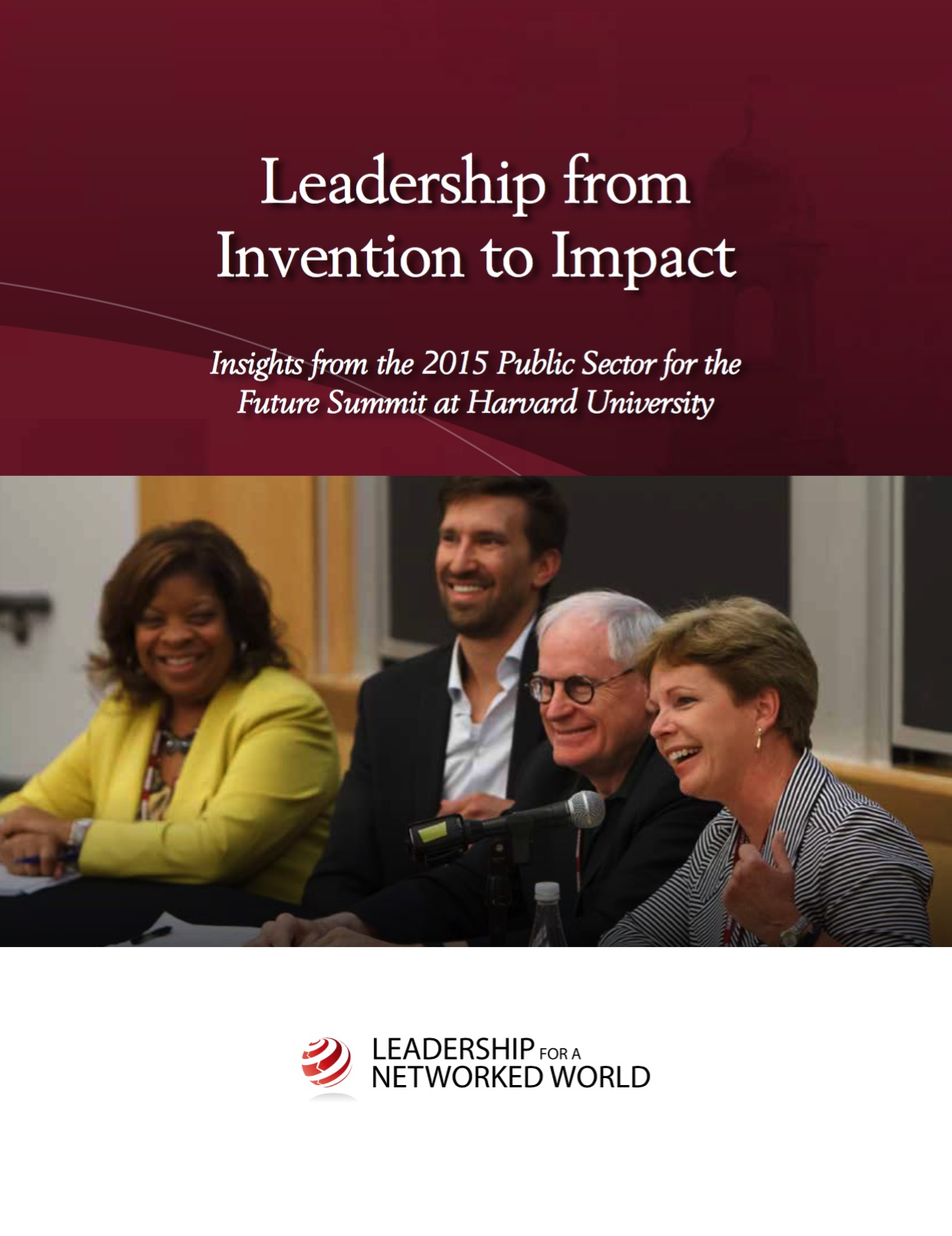Previous Reports
Citizen-Driven by Design: A Report from 2017 Public Sector for the Future Summit
Citizens around the world are demanding more responsive, more impactful, and less costly government. From the 2016 U.S. elections, to “Brexit,” to growing populist movements in Europe and across the globe, the central challenge for leaders now is making government better, faster, cheaper, and ultimately—citizen-driven by design.
Surging to the top of citizen-driven solutions is the intersection of behavioral economics, analytics, and design-thinking. When combined, these emerging strategies position leaders to better understand the needs of citizens, design better services, and leverage “nudge”1 solutions that have been proven to not only make services more beneficial for citizens, but also generate improved outcomes and public value.
Savvy leaders are already finding that nudge-based strategies increase the likelihood of accomplishing programmatic objectives more cost-efficiently and effectively than other strategies. Initiatives such as the U.K. Behavioral Insights Team, the U.S. Social and Behavioral Sciences Team, the Qatari Nudge Unit, and an array of state, local, and regional efforts around the globe are using simple tools to reduce costs and improve results in services such as education, consumer protection, tax collection, transportation, health, and beyond. Adding nudge-based strategies to the excutive toolkit is becoming an imperative as governments face resource constraints and citizens demand better outcomes.
Yet even with this progress by early adopters, most public sector organizations looking to implement nudge-based strategies find themselves grappling with challenging questions:
Where and how can citizen-driven design and nudge concepts be readily applied to policy development, citizen-facing services, and administrative functions?
How can analytics be leveraged to better understand not only where behavioral insights can be applied, but also how to redesign public services?
What are the cultural and political implications and effects of nudge solutions on an organization, and how should leaders prepare their stakeholders?
To address these critical questions and to help public sector leaders move forward, Leadership for a Networked World, the Technology and Entrepreneurship Center at Harvard, and Accenture, convened the 2017 Public Sector for the Future Summit: Citizen-Driven by Design from June 13 – 15 at Harvard University in Cambridge, Massachusetts. This eleventh-annual Summit brought together innovative government and higher education leaders, along with leading academics and industry experts, to learn and share ideas.
This report distills the key findings from the Summit. In particular, it features insights developed in partnership with Summit attendees that highlight how leaders can harness data and analytics, capitalize on lessons learned from behavioral economics, and understand and apply design thinking concepts. It also contains three practical examples—one on Illinois’ Innovation Incubator, one on Georgia’s Department of Administrative Services and statewide procurement, and another on California’s Department of General Services and greening fleet vehicles—that highlight how public sector organizations have embraced nudges, data and analytics, and design thinking as part of broader initiatives to improve citizen services and back-office operations.
Designing Public Services for a Digital World: A Report from 2016 Public Sector for the Future Summit
There is no debating the digital future is here—and it’s impacting government. Citizens want public services 24/7, mobile, anticipatory, personalized, and simple—just like they get from other service organizations. In fact, research by Accenture shows that nearly three quarters (73 percent) of U.S. citizens hold government to “the same or higher” standard as their commercial providers.1 In other words, they want their government to be as smart as their smartphone. They want their government in their pocket. They demand a government that is ready and available when they are.
The central challenge for public sector leaders is this: Design government organizations for this new digital world or lose public support and legitimacy.
We have redesigned governments before in the face of such massive change. The last great redesign came at the beginning of the 20th century when we needed to address corruption and to scale services as the nation and economy grew. We needed a design that focused on accountability, transparency, equity, and fairness—and we successfully created it. Yet in today’s digital world, we also need the agility, speed, and flexibility that citizens demand.
Leadership from Invention to Impact: A Report from 2015 Public Sector for the Future Summit
Government leaders are developing bold strategies to increase public value. Yet with citizen trust in government waning, the public sector needs more than new visions; leaders need to drive structural change by identifying high-yield strategies, bracing stakeholders and workers to endure an evolving and unpredictable operating environment, and gauging how much structural change is necessary to sustain progress.
Creating the Agenda: A Report from 2014 Public Sector for the Future Summit
Leaders in the public sector have worked hard to respond to the major structural and social challenges of this new era. Facing technological, societal, and political disruptions, they have developed new operating models such as shared services, lean business processes, and cross-jurisdiction collaboration that have made great headway in driving government efficiency.
Yet more ideas and strategies are needed. Changes in the economy, demographics, technology, legislation, and more are forcing leaders to be more creative and collaborative, and to adapt and innovate. They must not only to do more with less, but also build public trust and value.
To address these questions and create an agenda for change, Leadership for a Networked World, the Technology and Entrepreneurship Center at Harvard, and Accenture convened public sector leaders for The 2014 Public Sector for the Future Summit: Creating the Agenda. This first annual Summit, held at Harvard University in Cambridge, Mass., brought together top practitioners, industry luminaries, and Harvard faculty, fellows, and researchers to explore these topics.

